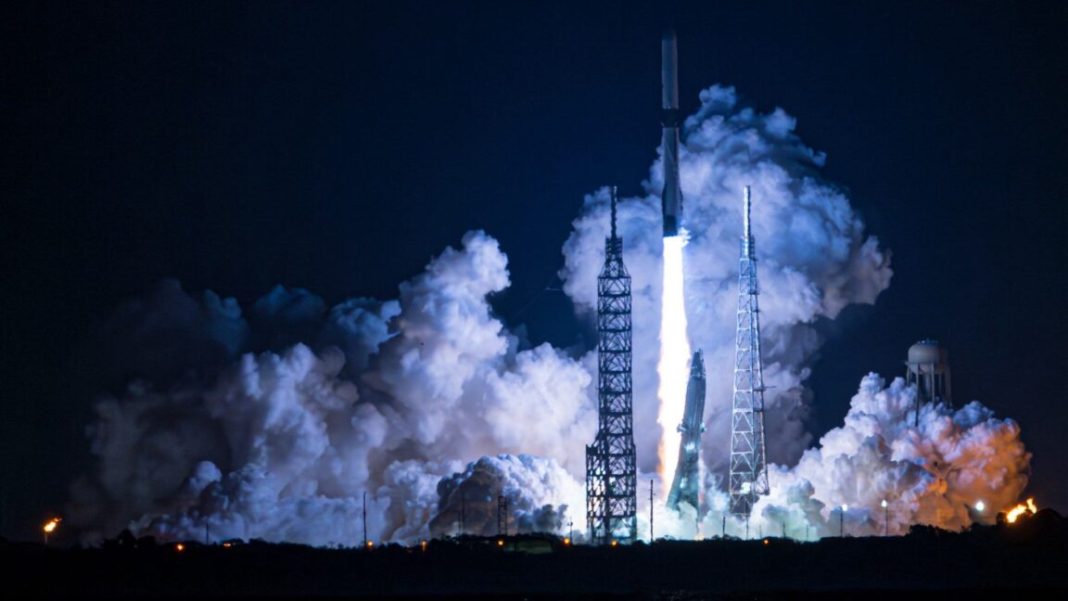The race to the Moon isn’t just a nostalgic echo of the past; it’s a vibrant, urgent push into the future. And when the CEO of a major space company declares they’ll “move heaven and Earth” to help NASA get there faster, you know the stakes – and the excitement – are soaring. That’s exactly what Blue Origin’s CEO, Dave Limp, recently expressed, signaling an extraordinary commitment to accelerate humanity’s return to the lunar surface.
A Celestial Promise: Moving Heaven and Earth
Limp’s powerful statement isn’t just corporate rhetoric; it’s a bold declaration of intent. It speaks to a deep-seated ambition at Blue Origin to be a pivotal player in NASA’s Artemis program, which aims to establish a long-term human presence on the Moon. For many, this isn’t just about planting a flag; it’s about building a sustainable future off-world, enabling scientific discovery, and inspiring a new generation of explorers and innovators.
The phrase “move heaven and Earth” conjures images of immense effort and unwavering dedication. In the context of space exploration, it means marshaling every resource, every brilliant mind, and every technological advancement to overcome the monumental challenges of lunar missions. It implies a willingness to innovate faster, collaborate more deeply, and push boundaries previously thought insurmountable. This kind of drive is exactly what accelerates progress in an endeavor as complex as space travel.
Blue Origin’s Lunar Toolkit: Speeding Up the Journey
So, how exactly does Blue Origin plan to help NASA reach the Moon with unprecedented speed? The company has been steadily building its capabilities for years, and its contributions are poised to be significant. At the forefront is their heavy-lift orbital rocket, New Glenn, designed to launch substantial payloads into space – including components for lunar landers and habitats. Paired with their powerful BE-4 engines, which also power ULA’s Vulcan rocket, Blue Origin possesses the fundamental hardware to get critical mass into orbit.
Beyond launch vehicles, Blue Origin is a key contender in the Human Landing System (HLS) program with their Blue Moon lander concept. A robust and reliable lunar lander is essential for safely transporting astronauts and cargo to the lunar surface and back. Expediting its development and integration with NASA’s overall Artemis architecture is likely a core part of their “move heaven and Earth” pledge. “It’s not just about building rockets; it’s about forging pathways,” observes Dr. Elena Petrova, a space policy analyst. “When companies like Blue Origin commit this deeply, they’re not just offering technology, they’re offering a faster route to humanity’s next giant leap.” This holistic approach, from launch to landing, highlights Blue Origin’s comprehensive strategy for accelerating lunar missions.
The Urgency of Lunar Ambition
The push for speed isn’t just about bragging rights; it’s driven by a confluence of factors. Scientific opportunities on the Moon, particularly at the South Pole where water ice holds immense promise, are pressing. Establishing a permanent presence can unlock new research avenues, provide resources for future deep-space missions, and foster a burgeoning lunar economy. Furthermore, the global landscape of space exploration is increasingly competitive, with multiple nations and private entities eyeing lunar resources and prestige.
By pledging to “move heaven and Earth,” Blue Origin is aligning itself not just as a contractor, but as a dedicated partner in a grand human endeavor. This level of commitment from private industry is vital for transforming ambitious goals into tangible realities. It suggests a future where collaboration, innovation, and an unyielding will to explore will define humanity’s next chapter among the stars, bringing the Moon closer than ever before.




